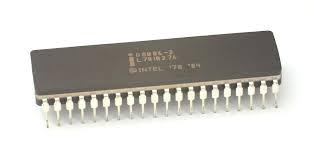Incremental instruction set is a design approach in computer architecture where instruction set extensions are gradually added to new processors to support new features or improve performance. This approach is used to maintain backward compatibility with previous generations of processors and software.
Each new generation of processors adds new features and capabilities that require additional instructions to be added to the instruction set. The instruction set is designed to be backward compatible so that software developed for older processors can still run on newer ones. This means that new processors must not only implement new instruction set extensions, but also implement all past instruction sets to ensure backward compatibility.

For example, X86 processors have been adding new instructions to their instruction set since 1978. This has led to a complex and sometimes redundant instruction set with many instructions that are rarely used. However, the backward compatibility of the instruction set has allowed software developed for older processors to continue to run on newer ones.
On the other hand, some architectures like ARM have taken a different approach by designing their instruction sets to be modular and scalable. This allows for new features and capabilities to be added without requiring backward compatibility with previous generations of processors. This approach can result in a more streamlined and efficient instruction set, but it may require software developers to rewrite their code to take advantage of new features.
Advantages of incremental instruction set:
- Backward compatibility: Incremental instruction set ensures backward compatibility with previous generations of processors and software. This allows software developed for older processors to continue to run on newer ones.
- Familiarity: Incremental instruction set allows software developers to work with familiar instruction sets, which can reduce the learning curve for developing new software.
- Flexibility: Incremental instruction set allows for new features and capabilities to be added to processors, which can improve performance and functionality.
Disadvantages of incremental instruction set:
- Complexity: Incremental instruction set can lead to a complex and sometimes redundant instruction set with many instructions that are rarely used. This can increase the complexity and cost of processors.
- Performance: The need to maintain backward compatibility can limit the performance of processors by requiring them to support old and new instruction sets.
- Development time: The development of incremental instruction set can be time-consuming and expensive, as it requires the development of new instruction sets as well as support for old ones.
- Compatibility issues: Compatibility issues may arise between different generations of processors that support different instruction sets, requiring software developers to write code that is compatible with both.